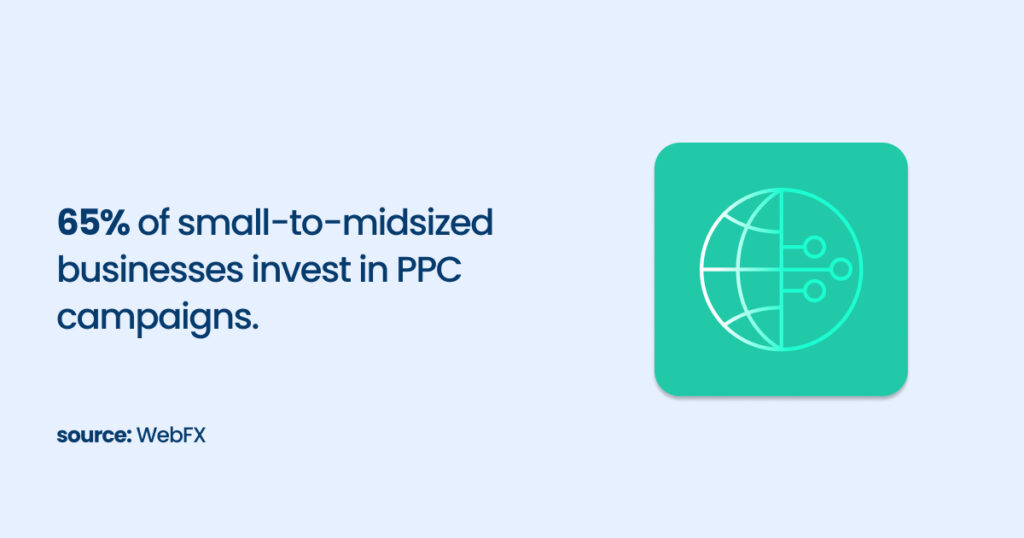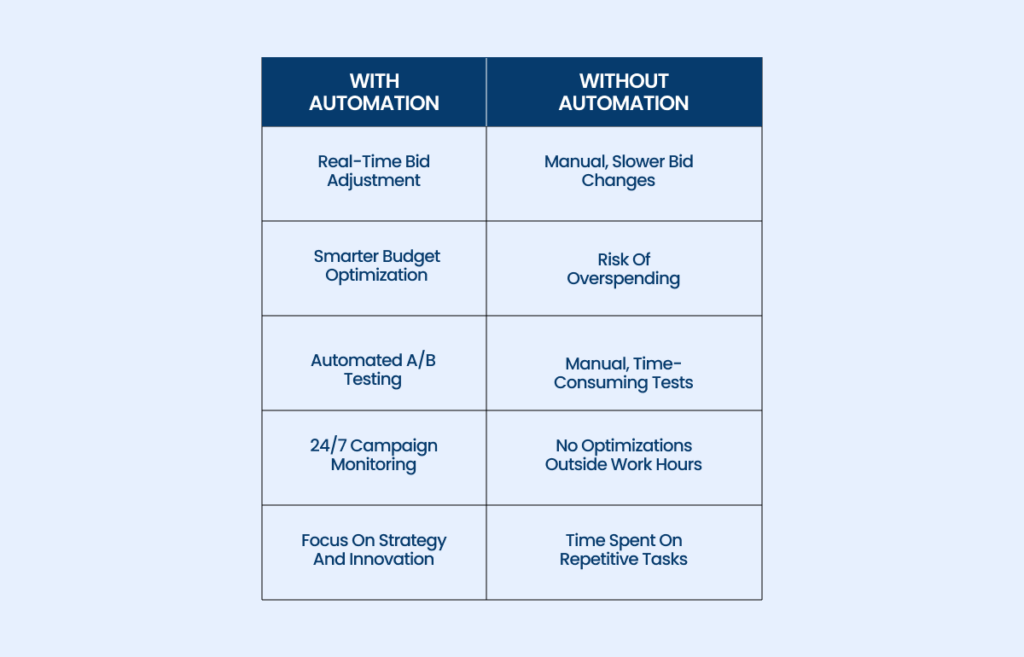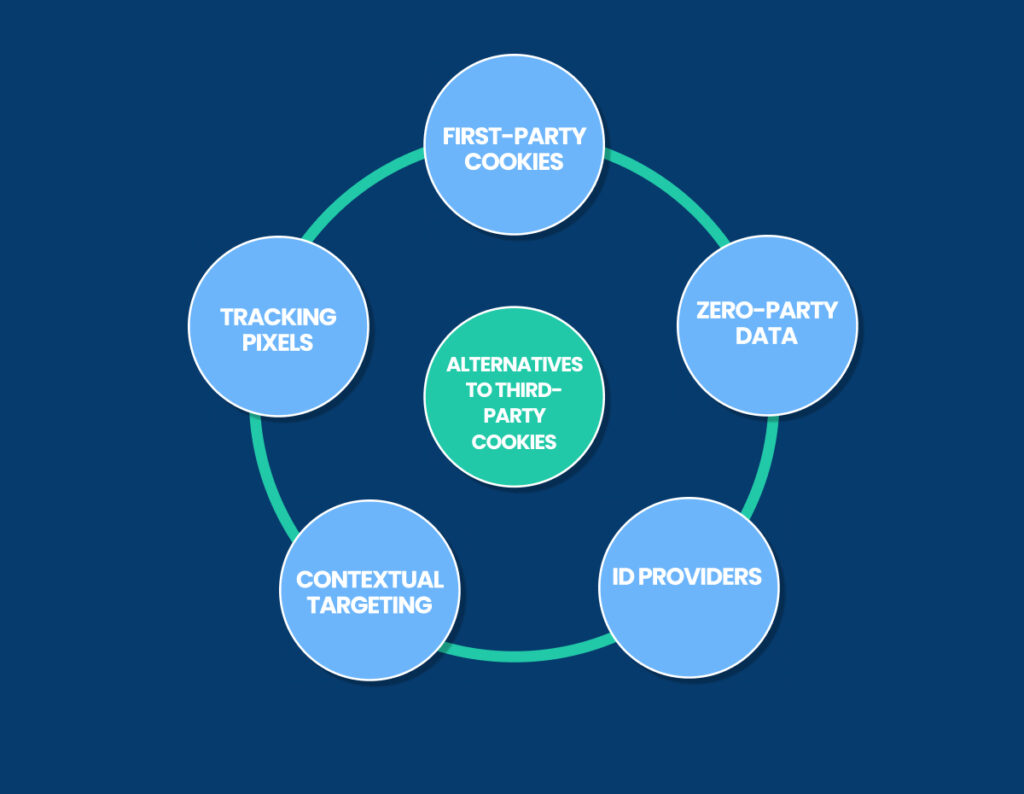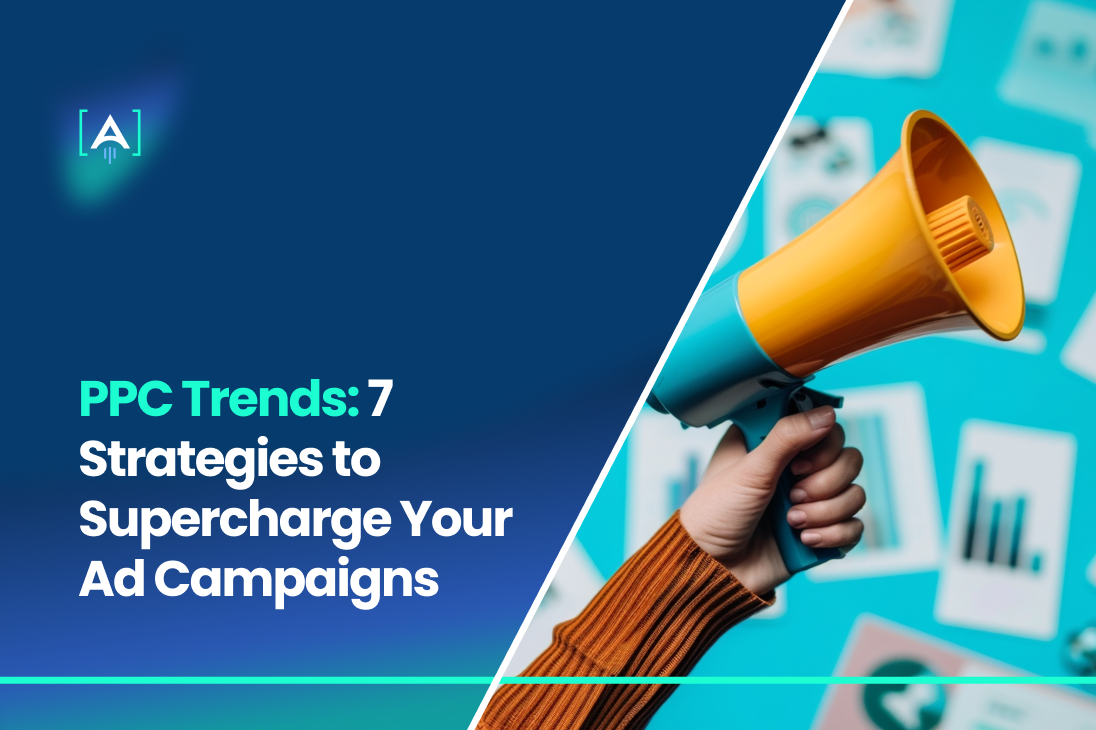Feeling like your PPC campaigns aren’t hitting the mark? You’re not alone.
As CEOs and business owners, you always seek ways to maximize your marketing budget and make smarter, data-driven decisions.
But with the rapid evolution of paid search marketing trends, keeping up can be challenging.

Source: WebFX
The good news? Adapting to these PPC trends is essential for staying competitive.
Whether aiming to boost B2B lead generation or drive more B2C sales, staying ahead of the curve will set you apart.
At our PPC Agency, we’ve identified seven powerful strategies to help you refine your PPC strategy, optimize your paid ads, and outperform your competition.
Let’s get started!
1. PPC Automation: The Future of Efficiency
When it comes to PPC trends, automation is leading the charge.
As ad campaigns grow more complex, relying on manual management can limit your ability to scale effectively.
PPC automation takes over routine tasks like bid adjustments, budget allocation, and ad placement, allowing you to focus on strategy and growth.
Why choose automation? It saves time, reduces human error, and optimizes your campaigns in real-time, 24/7.

Automation also helps you quickly adapt to market changes and stay competitive without constant manual intervention.
To stay competitive, you must embrace automation tools that streamline your process, save time, and improve performance.
Here’s how to make the most of PPC automation and get ahead of the competition:
Stay Ahead of the Curve with These Smart Strategies
- Leverage Smart Bidding
Why waste time adjusting bids manually?
Use Google’s Smart Bidding to automatically optimize for conversions or conversion value.
Tip: Set clear goals for each campaign (e.g., maximize conversions or target ROAS) to get the best results.
Remember: Smart Bidding adapts in real-time, meaning your bids always align with market conditions.
- Automate Ad Testing
Why guess which ad copy performs better? Let automation do the heavy lifting.
- Try tools like Google Ads’ responsive search ads to experiment with various headlines and descriptions.
- Tip: The system automatically shows the best-performing combinations, improving your CTR and conversion rate.
- Save time: No more manual A/B testing—let the system determine the winners for you.
- Schedule and Optimize Budgets Automatically
Stop wasting money on slow days.
- Automate budget adjustments based on performance. If conversions slow down, your budget can scale back automatically, saving you money.
- Tip: Use automated rules to increase the budget during peak hours and decrease it when performance dips.
Personalize with Dynamic Ads
Deliver personalized ads without constant tweaking.
- Dynamic ads automatically pull in relevant products or services based on user behavior.
- Tip: Use dynamic search ads to match user queries with the most relevant landing page, saving time while improving targeting.
Automated Reporting & Alerts
Stay on top of performance without constantly checking in.
- Set up automated reports to get daily or weekly updates on your campaigns.
- Tip: Use automation to trigger alerts if key metrics (like CPC or CTR) spike or drop unexpectedly. This helps you act quickly and avoid wasted ad spend.
2. AI: The Smart Way to Supercharge Your PPC Campaigns
Is running a PPC campaign that optimizes itself possible?
Adjusting bids, refining targeting, and improving ad performance while you sleep?
Yes, and that’s the power of AI in today’s paid search marketing trends.
AI tools such as Optmyzer help take your campaigns to the next level by automating complex tasks like bid management and keyword research.
This means less manual work and more time to focus on the bigger picture—growing your business.
Tools like Semrush’s PPC Tool also provide invaluable insights, helping you find the most profitable keywords and analyze your competitors’ strategies in ways that manual research simply can’t match.
Semrush’s PLA Research Tool streamlines the analysis of product listing ads by automatically gathering key data like PLA positions, search volume, ad copy, and pricing from any eCommerce site, including competitors.
This information helps you build more effective Shopping ads with ease.
Source: SEMrush
One of AI’s most prominent benefits is its ability to optimize in real-time.
As trends shift and market conditions fluctuate, AI algorithms automatically adjust your campaigns, ensuring you always get the most out of your budget.
Pencil is a powerful AI tool for creative assets that can help generate ad creatives designed to engage your audience.
The Meta Advantage+ audience leverages Meta’s cutting-edge AI to pinpoint the perfect audience for your campaign.
Source: Meta
In tests conducted by Meta, the Advantage+ audience consistently outperformed other audience options across various campaign objectives. The results showed:
- A 13% decrease in median cost per product catalog sale
- A 7% reduction in median cost per website conversion
- A 28% lower average cost per click, lead, or landing page view
Manual methods can’t achieve this kind of precision targeting as effectively or efficiently.
3. Video Advertising: From Static Images to Captivating Motion
Video has quickly become one of the most powerful tools in PPC trends.
In fact, by 2023, digital video ad spending reached an impressive $176.63 billion, showing just how much this medium has grown.
But why is video such a big deal?
As PPC trends evolve, incorporating video into your campaigns is no longer optional—it’s essential.
More and more consumers engage with video, making it the ideal format to grab attention and boost conversions.
Video ads can deliver your message more effectively by blending visuals, sound, and storytelling—elements that static ads simply can’t match.
Whether you’re promoting a product, service, or brand, video ads allow you to connect emotionally with your audience.
Platforms like YouTube, Instagram, and TikTok are hotspots for this type of content, allowing your paid search marketing efforts to reach more potential customers.
4. Google’s Phase-Out of Third-Party Cookies
A key shift in paid search marketing trends is Google’s move to phase out third-party cookies.
This change will affect how businesses track users and target ads. So, it’s time to rethink your approach to PPC campaigns.
Why Is Google Removing Third-Party Cookies?
- Privacy concerns: Users want more control over their data.
- Stricter regulations: Laws around data privacy are getting tighter.
- Need for transparency: Google wants to create a more privacy-friendly web.
Third-party cookies have been used for years to track website users, but this shift will change how businesses target their audience.
What’s Next? The Shift to First-Party Data

What is first-party data? It’s data you collect directly from your customers.
- Website visits
- Email sign-ups
- Purchases
Why does it matter? First-party data is more reliable and complies with privacy rules, helping you still effectively target users.
Contextual Targeting: The New Opportunity
Without third-party cookies, contextual targeting is becoming popular again.
What is it? Displaying ads relevant to the content users are currently browsing on a webpage.
For example, a user reads an article on fitness. You can show ads for workout gear. It keeps your ads relevant without invading privacy.
How to Prepare Your PPC Strategy
- Focus on first-party data: Gather valuable data directly from users through your website, app, or email sign-ups.
- Implement contextual targeting: Show ads based on the content users view rather than tracking their behavior across sites.
- Strengthen data collection on your own platforms: Improve how you collect and manage customer data to enhance targeting.
- Explore privacy-friendly methods: Test new ways to reach your audience that don’t rely on third-party cookies.
- Stay ahead of PPC trends: Adapt to these changes to future-proof your campaigns and stay competitive.
For a detailed guide on how to How To Optimize Your Google Ads, check out the PPC Checklist.
5. Voice Search: The Future of PPC is Talking Back
Voice search is rapidly becoming one of the most exciting paid search marketing trends.
With more people using voice assistants like Siri, Alexa, and Google Assistant to find information, businesses need to start optimizing their PPC campaigns for this new way of searching.
So, you may ask, “How do I optimize my PPC campaign for Voice Search?”
Here are some key tips:
- Use conversational keywords: Voice searches are more natural and often phrased as questions. Instead of short phrases, think about how people speak. For example, someone might type “best pizza delivery” but ask, “Where can I find the best pizza delivery near me?”
- Target long-tail keywords: Voice searches are usually more detailed and specific. To capture more relevant traffic, include long-tail keywords that reflect this.
- Optimize for local search: Many voice searches are local, like “restaurants near me.” Ensure your PPC campaigns have location-based keywords to attract these searches.
- Answer common questions: Voice search users often ask questions, so create ads and landing pages that directly answer relevant questions about your business. Think of phrases starting with “how,” “what,” and “where.”
- Improve your mobile experience: Voice search happens mostly on mobile devices. To convert voice search users, ensure your website is mobile-friendly, loads fast, and delivers a smooth user experience.
6. CRM Integration: Connecting the Dots
One of the most exciting PPC trends right now is CRM integration.
You can connect your marketing and sales, creating smooth data sharing that improves ad targeting and tracking.
Why CRM Integration Matters in PPC
When your CRM is synced with your PPC strategy, you unlock a wealth of actionable insights:
- Track your audience’s journey: You can identify what ads, keywords, and strategies lead to conversions.
- Lead quality tracking: CRM data allows you to track leads as they move through each stage of your sales funnel. You identify which PPC efforts bring in traffic and qualified leads.
- Create specific audience segments: You can target people based on past behaviors, preferences, and interactions with your business, resulting in more personalized ads.
The Benefits of CRM-Powered PPC Campaigns
Personalized Ads
Your CRM data provides valuable insights into your customers’ preferences and behaviors.
Use this data to craft personalized ads that resonate with each customer segment.
For instance, if a user has shown interest in a particular product or service, you can serve them tailored ads related to that interest.
Accurate Ad Attribution
Tools like HubSpot provide a clearer picture of how your ads contribute to customer lifetime value (LTV) and return on ad spend (ROAS).
This integration lets you go beyond basic analytics to truly measure the impact of your PPC efforts across the entire customer journey.
Improved Lead Nurturing
Integrating CRM data with your PPC campaigns allows you to nurture leads more efficiently.
Instead of treating each new click as a fresh lead, your CRM can show which visitors have already interacted with your business.
Better Retargeting
CRM integration boosts retargeting campaigns by allowing you to identify leads close to conversion or those who dropped off at a specific stage.
You can then serve tailored ads to re-engage them, returning them to complete the purchase.
Optimized Bid Strategies
With CRM data, you know which leads are most valuable.
So, you can adjust your bidding strategy in real-time, spending more on high-quality leads that are more likely to convert and scaling back on less promising ones.
7. Multichannel Attribution
Today’s customers interact with your brand in many ways before converting.
They might see paid ads, visit your website, browse your social media, and even read an email, all before making a purchase.
Understanding how these touchpoints work together is where multichannel attribution comes into play.
Instead of just focusing on the last click before a conversion, multichannel attribution helps you see the bigger picture.
It shows how every interaction along the customer journey—from the first ad to the final sale—contributes to the result.
Why Multichannel Attribution Matters
- Gain insight into the customer journey: Instead of focusing on one touchpoint, multichannel attribution reveals how all channels work together to drive conversions.
- Allocate your budget wisely: Knowing which channels contribute the most lets you invest your budget where it will make the biggest impact.
- Improve overall strategy: Understanding how your marketing efforts connect allows you to create a more cohesive and effective approach.
How to Implement Multichannel Attribution
- Leverage the right tools: Use tools like Google Analytics 4 or Facebook Attribution to track customer interactions across various platforms.
- Analyze all touchpoints: Understand the role of search ads, social media, email, and more in the customer journey.
- Reallocate budget: Based on attribution insights, shift more resources toward the highest-performing channels.
Key Takeaways: The Future of Your PPC Campaigns
- Automation and AI will help you run smarter, more efficient campaigns with real-time optimizations.
- Video ads are increasingly important for capturing attention and driving engagement across platforms.
- Multichannel attribution ensures you track the full customer journey, helping you understand how each interaction contributes to conversions.
- CRM integration allows you to better personalize ads, track leads, and optimize your strategy based on customer data.
Let’s Make Your PPC Ads More Visible and Convert Better
Managing PPC campaigns can be challenging, but you don’t have to do it alone.
At Azarian Growth Agency, we don’t just manage your PPC campaigns—we ensure they stay on top of the latest PPC trends.
We use tools like automation and AI to optimize your campaigns, ensuring you get better results with less effort.
From personalized targeting to maximizing conversions, we handle the complex parts of your campaigns so you can focus on growing your business.
Let us help you drive real growth through smarter, more efficient PPC strategies.

